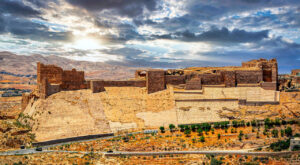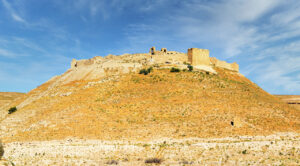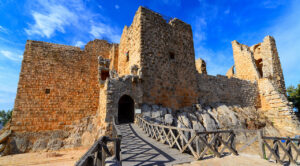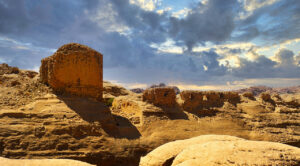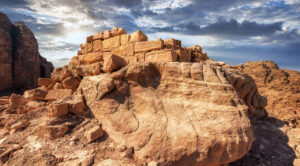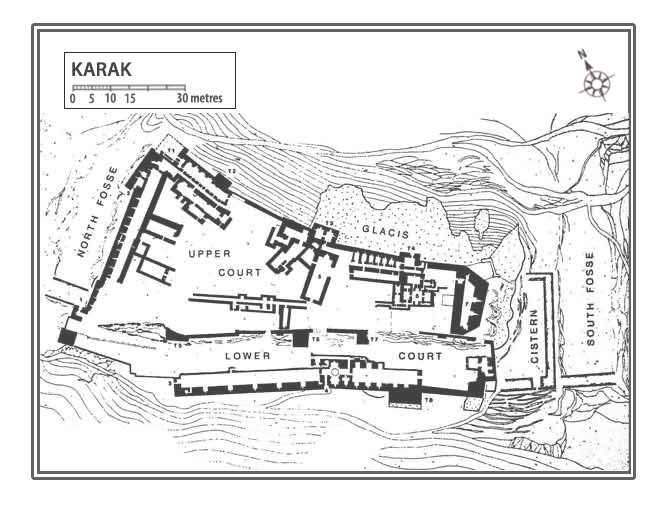The ancient Crusader Castle of Karak, later transformed into a fortress by the Mamluks, is a marvel nestled within the historic walls of the old city of Karak. A beacon of Jordan’s rich history, this formidable stronghold served as a site of legendary confrontations between the Crusaders and the armies of Saladin. Today, it stands as one of the most famous Crusader castles, offering visitors a tangible connection to the past.
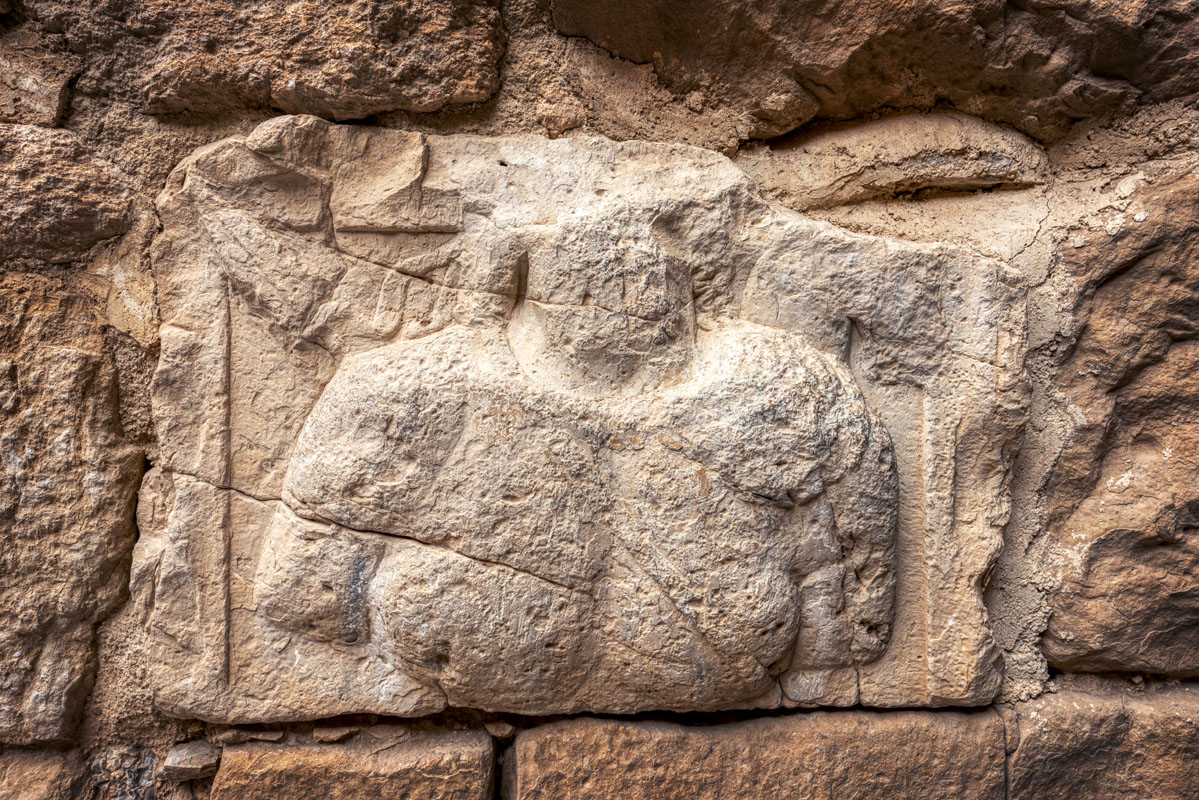
Constructed in the mid-12th century AD by the Crusaders, Karak Castle was a pioneering example of fortified tower architecture, reflecting the ingenuity of Crusader design. The structure, dominating the surrounding town with its commanding presence, was once the base of Lord Raynald of Châtillon, whose ruthless campaigns and defiance of Islamic forces wrote his name into history. The castle endured numerous sieges before ultimately falling to Saladin in 1187, marking a new chapter in its storied existence.
Under Mamluk Sultan Baibars’ rule in 1264, the castle underwent extensive renovations, introducing robust fortifications and key additions such as the northern fortress keep. These enhancements fortified Karak’s legacy, transforming it into an even more formidable stronghold.
The striking wedge-shaped layout of Karak Castle spans approximately 220 metres in length and 125 metres in width, particularly expansive at its northern end. Visitors enter the castle through the Ottoman Gate, an impressive portal that echoes the layered history of the structure. To the left of the gate lies a hidden gem—the original secondary gate, once accessible by a wooden bridge over the north ditch.
Karak Castle is divided into two main defensive levels, separated by an imposing inner wall.
The upper court hosts the castle’s principal buildings, including a Crusader church, the Mamluk keep, a palace, and a mosque. Each structure tells its own story, inviting visitors to imagine life within the fortress walls. The lower bailey, lined with underground galleries, served as a space for storage and defence, a reminder of the castle’s utilitarian past.
The castle’s architectural magnificence is most evident in its robust towers and defences. The north front is fortified by two imposing corner towers, while the east front showcases four towers accompanied by a steep masonry glacis—a sloping wall running along the base, designed to deter invaders.
Beyond its architectural splendour, Karak Castle is home to the Karak Archaeological Museum, located in the lower court. This museum, inaugurated in 2004, offers a fascinating glimpse into the region’s past, spanning prehistory to the Islamic era. Visitors can explore a curated collection of artefacts and learn about the area’s historical and archaeological significance.
While Karak Castle once stood as a bulwark protecting the assets of Crusader states within the Latin Kingdom of Jerusalem, its role today is far less combative. Modern travellers often visit the castle while traversing the ancient King’s Highway, using it as a waypoint to other renowned sites. However, the castle’s enduring allure and historical layers ensure it remains a destination in its own right.
Karak Castle invites history enthusiasts, architecture lovers, and curious travellers to immerse themselves in its timeless stories and awe-inspiring design. Whether exploring its towering fortifications, wandering its underground galleries, or soaking in the panoramic views from the upper court, Karak leaves an indelible mark on all who visit.
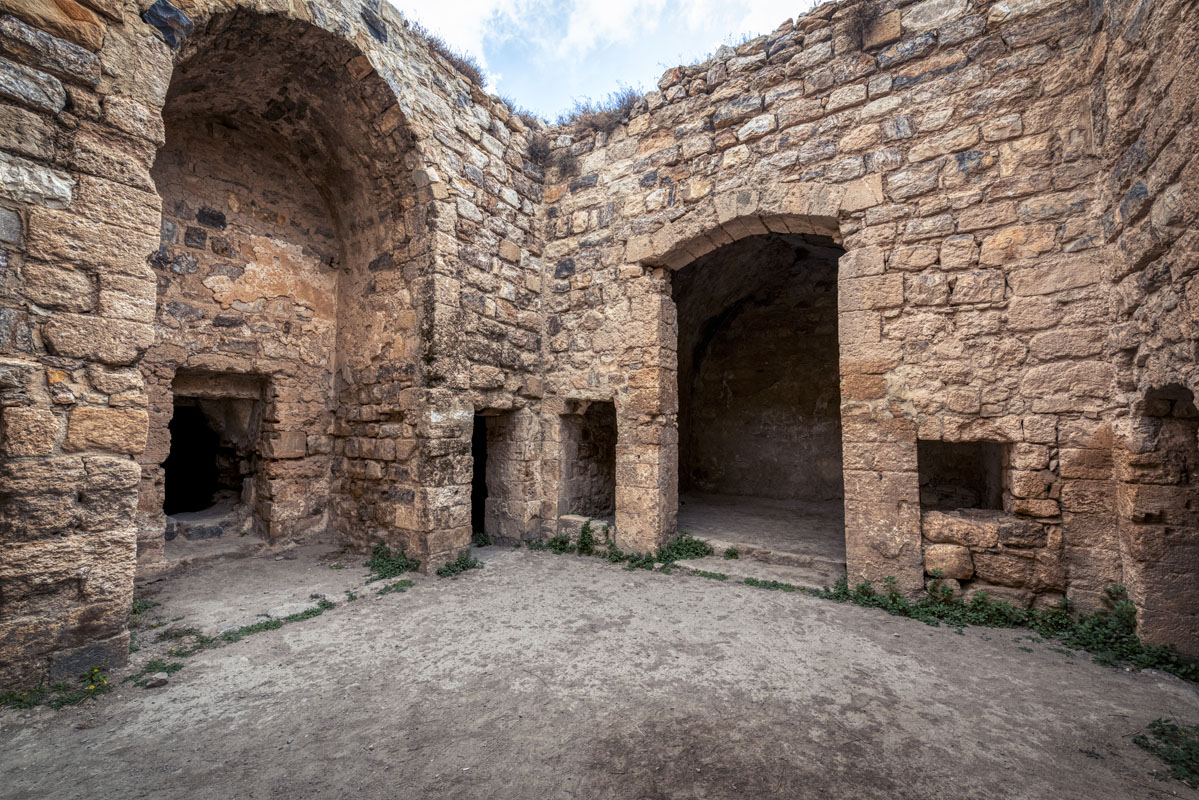
The story of Karak begins in antiquity when it thrived as a central Arab Nabataean settlement. Numerous Nabataean reliefs and sculptures survive, bearing testimony to this era. During Roman rule, the city was renamed Characmoba and flourished as a regional centre. Later, in the Byzantine period, Karak emerged as a diocesan town and was even depicted as a fortified city on the famous Madaba mosaic map.
By the time of the Crusades, Karak Castle had become central to the Lordship of Oultrejordain. Pagan, Lord of Oultrejordain, shifted his power base to Karak, reinforcing its defences and cementing its strategic importance. The construction of deep, rock-cut ditches and the addition of towers by Pagan’s successors fortified the castle further, while its impressive arched halls remain some of the finest Crusader architectural features surviving today.
During the mid-12th century, Karak came into the possession of Raynald of Châtillon, whose audacious raids on trade caravans and even attempts to strike at Mecca provoked the attention of Saladin. The mighty Sultan besieged the castle twice, in 1183 and 1184; however, the Crusaders managed to defend it both times with reinforcements. It was not until 1188, during a third siege led by Saladin’s nephew Sa’d al-Din, that Karak finally succumbed. Cut off from supplies and left with no reinforcements, the fortress surrendered after several months, marking a pivotal moment in the Crusades.
The site’s significance continued under the Ayyubid dynasty when it served as the administrative centre for Jordan’s regions. By 1263, under Mamluk rule, Sultan Baibars expanded the fortress further, adding a tower on the northwest corner. The Mamluks retained Karak as an essential administrative and military post.
During the Ottoman era, Karak Castle played a key role due to its position at the crossroads of the Arabian Peninsula, Egypt, and Greater Syria. By the late 19th century, it housed a garrison of 1,400 soldiers, safeguarding vital trade routes and serving as a strategic administrative base. Parts of the castle were repurposed during this time, reflecting its continuous adaptation for use through the centuries.
Even in modern times, the castle’s story continues, albeit tragically. On 18 December 2016, Karak was the site of a terrorist attack, resulting in the deaths of 14 people and injuries to 34 others. This sombre event added a contemporary chapter to the castle’s long and layered history.
Today, Karak Castle stands as a testament to the ingenuity, resilience, and conflict of the many civilisations that once called it their stronghold. From its Nabataean roots to its role in Crusader and Islamic history, the castle invites visitors to explore its halls and uncover the stories etched into every stone. It is a place where history comes alive, surrounded by the echoes of its grand and turbulent past.
